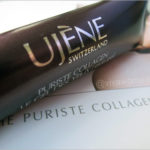
Youthful skin starts from healthy skin cells
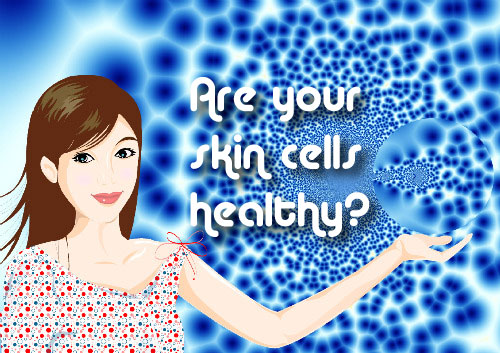
I was never good in science or biology but I do know that the cell is the functional basic unit of our life. And because skin is the human body’s largest organ, this naturally means that if we are able to maintain healthy cells, we can have better looking skin. This is the reason why many experts, including leading dermatologists like Dr Nicolas Perricone and Dr Jeanette Graf have been encouraging healthy diets for beautiful skin. Today, I’ll share with you eight facts that I’ve found about our skin cells.
1. The rate of skin cell regeneration
Humans shed and re-grow outer skin cells every 27 days but we actually lose about 30,000 to 40,000 dead skin cells off the surface of our skin every minute of the day. Our epidermis is always making new skin cells that rise to the top to replace the old ones. (source)
2. Skin thins with age due to slower skin cell renewal
With increasing age, the body’s ability to repair and regenerate cells is reduced. The most obvious sign of intrinsic aging is a decrease in the overall thickness of the epidermis as a whole, with a reduction in the number of cell layers although the number of cells remain. The number of pigment-containing cells (melanocytes) decreases, but the remaining melanocytes increase in size. So do the numbers of the langerhans cells, which are involved in the body’s response to allergens. Aging skin thus appears thinner, more pale, and translucent. (source 1, source 2)
3. Skin cells responsible for collagen formation
Skin cells called fibroblasts are capable of producing collagen. When needed, fibroblasts replace broken collagen fibers with new ones. Unfortunately, as we age, the skin’s ability to replace damaged collagen diminishes and more gaps and irregularities develop in the collagen mesh. This process eventually leads to wrinkles. (source)
4. Major environmental stressors affecting skin cells
Skin cells, in particular keratinocytes and fibroblasts, are the cells most exposed to environmental stressors such as UV light, smog, toxins, cigarette smoke and pollution. Once these cells are damaged, skin loses firmness and vigor, becoming weaker and more vulnerable to diseases. (source)
5. Skin cell damage caused by free radicals
Like all cells in our body, our skin cells need oxygen to survive and function. These skin cells will also make free radicals. When free radicals become too high – due to UV rays, smoking, pollutants, stress and so on – the damage starts. This is the process known as oxidative stress, a chemical process in which unstable molecules called free radicals steal electrons from healthy cells, and is linked to skin aging. We need enough antioxidants to neutralize these free radicals. They protect our bodies by mopping up excess free radicals, thus preventing oxidative stress. (source: Skin Care Secrets by Liz Earle)
6. Skin cell damage caused by excessive UVA rays
Exposure to sunlight is the main culprit for hyperpigmentation. UV light stimulates the production of pigment (melanin) in the layers of skin cells. Prolonged or excessive exposure to sunlight can cause cell damage that may affect normal cell production in the skin, producing an imbalance in cell types such as those producing pigment. A new study by researchers at NYU School of Medicine found that UVA radiation damages the DNA in human melanocyte cells, causing mutations that can lead to melanoma. Melanocytes, which contain a substance called melanin that darkens the skin to protect it from the ultraviolet rays of the sun, are more vulnerable to UVA radiation than normal skin cells because they are unable to repair themselves as efficiently. (source)
7. Skin cell damage caused by inflammation
Dr Perricone goes a step further to argue that it is inflammation at the cellular level that causes free radicals to form which damage collagen and elastin in the skin leading to wrinkle formation and sagging skin. From what I read, this happens when tissue breakdown occurs, such as with free radical attack, and white blood cells are mobilized to clean up the debris, creating an inflammatory response. And according to Dr Perricone, 50% of skin aging is due to the glycation process, which refers to sugar attaching or cross linking to collagen cells. The damage to skin occurs when sugar levels go up drastically and frequently say, when you binge on sugar several times a day. (source)
8. Skin cell damage caused by cortisol
Stress is often cited as a major cause for skin aging. Why? Cortisol is secreted in higher amounts during times of stress and a high level of cortisol can affect the immune cells in the epidermis, disrupting the skin’s barrier and weakening the skin’s defenses against UV light and other pollutants and infections. (source: Skin Care Secrets by Liz Earle)
So given that skin cells are not something we can apply serums or creams over, how can we possibly go about protecting them and keeping them healthy? Is it even possible to expedite the skin cell renewal process when we age? Well, it isn’t that easy but it is possible and I’ll be discussing some of them tomorrow. For now, perhaps you can share with me if you think your skin cells are in good shape. Over to you!
Read entry: 12 ways to protect your skin cells
Comments
Leave a Reply
You must be logged in to post a comment.















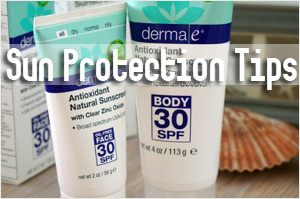
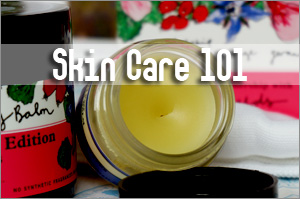

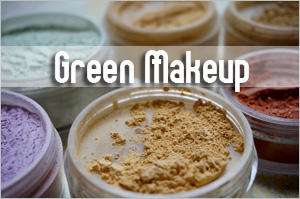


Thanks for all this information. Wow it is a lot to think about. It is also making me think about changing a few of my habbits lol.
which is why the medical community claims that rather than drinking collagen (which is more of improving the skin condition as a general on the whole body and will require a lot of money and time to see results), it is suggested that we should use products that encourage cell repair and collagen building
Yup…it will involve some lifestyle changes.
I see…but still, a number of the ladies mentioned they see good results from taking collagen.
the lady who was talking to me was also in quite a dilemma, she’s a pharmaceutical major, and science tells her that drinking collagen doesnt specifically help the skin, yet when she drinks collagen, she feels that her skin is more supple.
i suppose that the only thing that everyone agrees on is that it is quite an expensive thing to maintain.
It obviously includes lifestyle changes pertaining to exercise and food as far as I can see because nothing applied on the surface would be enough to do the job.
Btw, Sesame, I wanted to say again that I love your blog coz some of your articles are just too good and well-researched and pondered upon which is a very appreciable effort on your part ?
possibly an expensive placebo ?
Thanks Swathy! I visited your blog too and you’ve done a good job too. ?
Thanks Sesame. That’s really great coming from your ?
Btw, I have a favor to ask of you. If you could oblige me, would you please do a guest post on my blog.
Thanks for the invite but I don’t have the time to guest post anywhere. I barely have time to blog once a day here already and my work is getting busier from next week.
Food we take in also has a lot of reasons behind skin health. We should eat healthy foods and especially those that help protect and promote new cells to replace old cells. Our skin is a miracle. Without it we cannot live.
Linda last post is: How to Effectively Remove Skin Moles
To reduce the affect of free radicals we need to add more antioxidants to our food and should follow a healthy skincare regimen to keep it healthy and glowing skin.
Jenny Williams last post is: Review of awful affects on skin, when exposed to sun